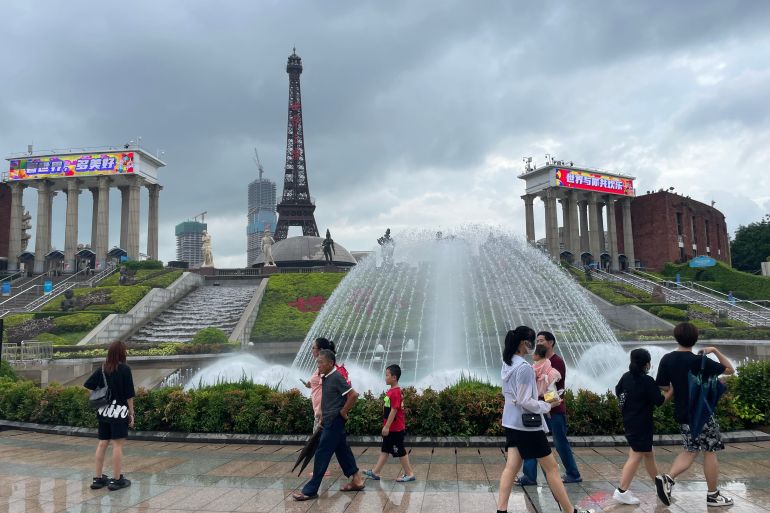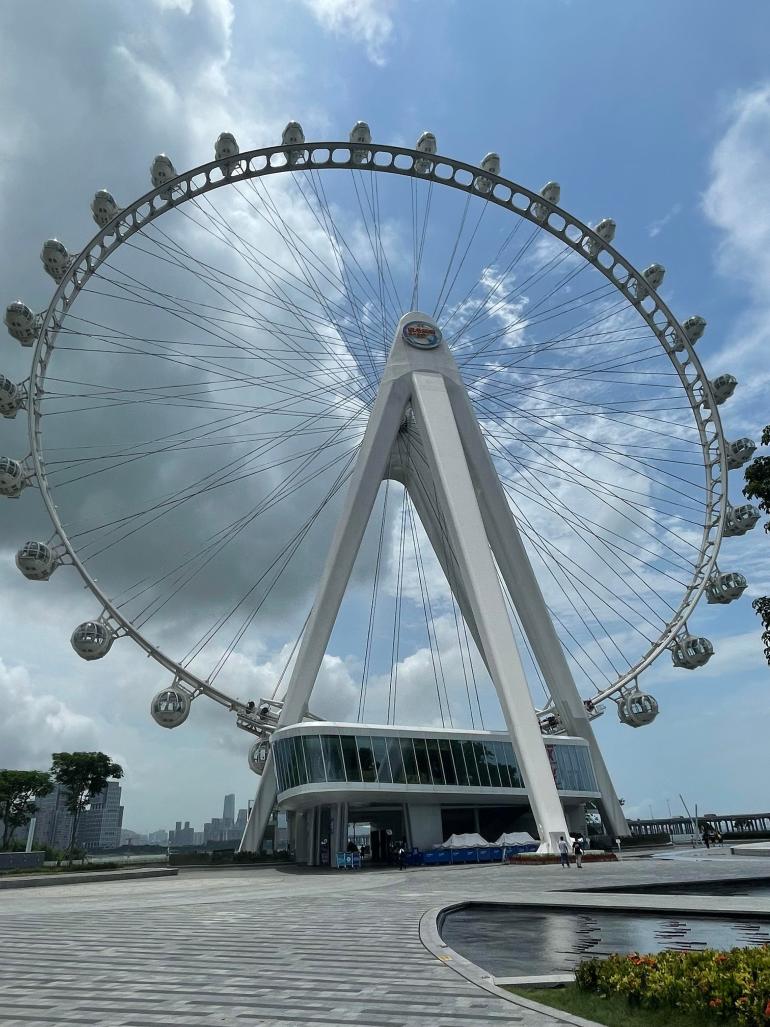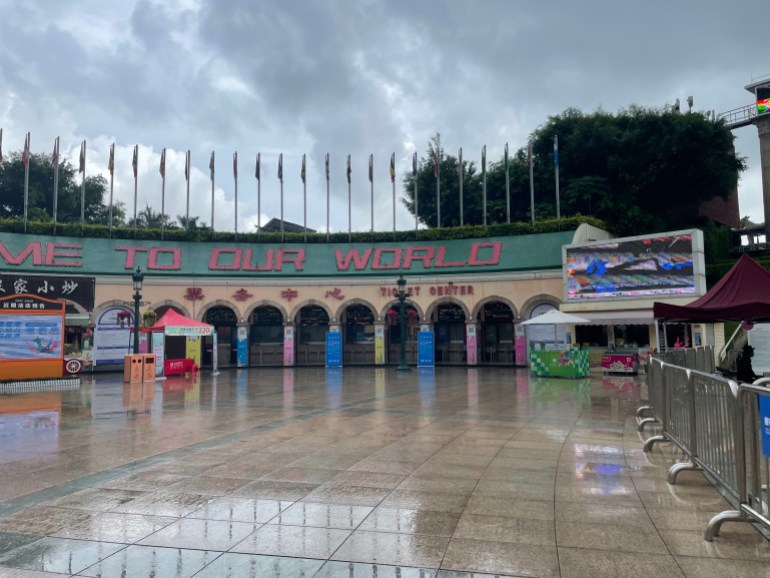In ‘COVID-Zero’ China, paranoia thrives as tourism withers
As the Delta variant of the coronavirus spreads to more than half of China’s provinces, the whole country hunkers down while economic forecasts go south.

Shenzhen, China – August was supposed to have been the biggest travel month of the year outside of the Lunar New Year holiday period for most families in China. The beaches, resorts, hotels and theme parks were expected to be full.
Then new COVID-19 outbreaks, sparked by the introduction of the Delta variant of the coronavirus in the city of Nanjing late last month, brought most travel and tourism to a standstill.
Keep reading
list of 4 itemsMexico’s teachers seek relief from pandemic-era spike in school robberies
‘A bad chapter’: Tracing the origins of Ecuador’s rise in gang violence
Why is the US economy so resilient?
China’s “COVID-zero” strategy of eliminating any cases in the country has now put millions under lockdown or limited their movement as local governments restrict travel regardless of whether cases have popped up in their jurisdictions or not.
On Thursday, China’s National Health Commission reported 81 new confirmed cases of COVID-19 in the mainland, compared with 111 the previous day. Government authorities also closed a terminal at Ningbo-Zhoushan port – the world’s third busiest container port – after a worker there became infected with COVID-19.
With Delta now spreading to more than half of the country’s 31 provinces, the economic impacts for tourism, service industries and domestic consumption will only deepen if those restrictions extend into September or possibly into the next major extended holiday for National Day at the start of October.
Shenzhen’s Window of the World – a popular theme park with miniature versions of famous attractions from around the globe such as the Eiffel Tower, Stonehenge, and the Sydney Opera House – is a prime example of the restrictions now in place, perhaps unnecessarily, in some locations.
The theme park had around four million visitors in 2019, or a little over 10,000 per day, according to the Themed Entertainment Association. But now, it stands largely deserted on an early August afternoon visit.
“There are around 400 people today,” a saleswoman said through the window at the ticket office where no lines formed. “There are a lot less people coming because of the outbreak restrictions.”
Those restrictions include a halt of live performances – so no hula dancers or Maori chanting – as the facility limits capacity to prevent the spread of the COVID-19 disease caused by the coronavirus.

On the same day at Bay Glory, a massive cantilevered observation wheel nearly 130m tall and overlooking the Pearl River Delta estuary, the wheel sits motionless and few tourists pass below. With so few people around, the scene has more of a post-zombie apocalypse feel than what it is billed as Shenzhen’s newest landmark tourist attraction.
These are restrictions for a city that has not had a locally transmitted COVID-19 case since one was discovered in late June, a city that is not in an outbreak zone nor directly next to one. While cases coming from abroad continue to arrive, those have been caught in tight quarantine restrictions at the borders that require people to hunker down in a quarantine hotel for 14 days, then at home for an additional 7 days.
Shenzhen’s government is also telling residents not to leave the city unless absolutely necessary, forcing people to essentially drop any summer travel plans, even locally.
“There are massive amounts of trip cancellations, and it is not only going to affect business in the industry financially, but also cast fear among potential travelers during the outbreak,” Zhou Mingqi, founder of tourism consultancy firm Jingjian Consulting in Shanghai, told Al Jazeera.
Zhou said that the situation will likely last through September, if not longer. “It remains to be seen how far and wide and how far-reaching the impacts will be, just as it is unclear when the outbreak will be over,” he said.
“Our assumption is that it will take around two months to discover the full extent and bring infections under control,” Imogen Page-Jarrett, a Beijing-based research analyst with The Economist Intelligence Unit, told Al Jazeera.
So far the impact has been swift, and cancellations are expected to continue through the next few weeks. According to the latest data from aviation analytics company OAG, the number of seats offered by airlines in China dropped 32 percent in the first week of August, the biggest decline since similar restrictions were put into place in early 2020.
Paranoia, the destroyer
Tightened restrictions are largely springing from local governments seeking to be as safe as possible, with local officials hoping to avoid potential career-ending decisions by being too lax. China has been proud of its COVID-zero approach at a time when many nations have struggled with mass infections and deaths, and that approach is unlikely to be rolled back any time soon.
More than 30 officials have been punished or warned already for lapses in oversight in major Delta outbreak hot spots – particularly in Jiangsu province, where the most recent surge originated, according to a recent report in China state-run newspaper the Global Times.
That fear of error in how officials deal with the outbreak reaches down not just to major cities but to rural areas across the country as well – something not seen since early 2020, when villages barricaded themselves off from outsiders as the pandemic hit.
“I’ve heard some people talking about their hometowns, for example, where there aren’t any cases but they’ve still shut down a lot of restaurants, and it seems to me like some smaller towns can be really strict, and this is something we saw earlier and tend to see now as well,” Page-Jarrett said. “Tolerance is very low.”

Forecasts go south
The outbreak and restrictions imposed have already led Wall Street to start trimming its China growth forecasts for the year, with Morgan Stanley, JPMorgan and Goldman Sachs all lowering projections earlier this week due to the unexpected surge in cases, sluggish trade data and factory-level inflation over the past two weeks.
Zhu Ning, deputy dean of the Shanghai Advanced Institute of Finance, said he expects 0.3 to 0.4 percentage points to be trimmed from overall growth this year because of the outbreak, largely from interruptions to tourism, entertainment, service industries and overall domestic consumption during the usual end-of-summer vacation period.
“If this were to last longer it would of course have a much more far-reaching impact on the economy,” Zhu told Al Jazeera. “For the service industry, and consumption in particular, it could be for longer and at a bigger scale.”
Anything longer extending into October would be much more serious, he said.
“The economy was already slowing down, even without this interruption, at the turn of July and August,” Zhu said.
Evidence of that surfaced on Wednesday when the Chinese Association of Automobile Manufacturers reported that auto sales were 1.864 million in July – down 11.9 percent from the same period a year ago.
“Consumption had been expected to carry the driving force of economic growth for the rest of the year, so that’s why COVID couldn’t have come back at a worse time,” said Zhu.
Page-Jarrett said The Economist Intelligence Unit is projecting a 0.5 percent drop in growth from its previous forecasts of 8.5 percent for the year.
“We had expected recovery and domestic tourism alongside the school holidays over the summer and in personal consumption,” she said. “I think this will hamper a lot of that recovery, and also people’s confidence will take quite a knock, because they’ll be worried about the government’s ability to handle these new variants, and also start to question whether the vaccines are effective.”
Since the outbreak is so new, there have not been any new policy measures released at the central government level to soften the blow for those local areas where economic activity has slowed the most. Zhu expects the government could extend tax relief to smaller and medium-sized companies – as well as reduce fees and extend loan repayment periods, similar to measures rolled out mid-2020.
“I think they’ve already talked about supporting infrastructure investment in the second half of the year, and they could increase the issuance of local government bonds, but I don’t think it will be anything drastic,” Page-Jarrett said. “They’re also concerned about things like fiscal and debt sustainability in the long term. So I don’t think there’s anything there that would offset the hit to private consumption, if that makes sense. To be honest, government policy isn’t a huge determinant of household spending, anyway.”
Longer term, if outbreaks like the current one persist or return, China will need to rethink its COVID-zero approach, said Zhu.
“The key question is ‘How do we react to COVID?’” he said. “If we have to deal with this longer, even the rest of the decade, maybe we would need to find a better approach to contain or live with COVID. That’s the important question for the Chinese government going forward.”